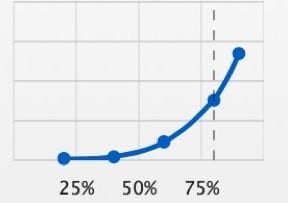Advertising on Amazon is challenging for many sellers. This confusion often stems from sellers approaching Amazon ads the same way they would Google Ads (formerly AdWords).
Amazon Marketing Services, the company’s ad platform, is a cost-per-click model, as is Google Ads. However, AMS is designed exclusively to sell products. With the proper approach, sellers can make this platform efficient. If sellers optimize their product pages, Amazon ads will perform better. The higher a product ranks, the more effective the ad campaigns — saving money and driving sales.
There are many KPIs that will help manage your seller account on Amazon. For advertising, I focus on four metrics:
- Advertising cost of sales,
- Search term impressions,
- Conversion rate,
- Order acquisition cost.
Advertising Cost Of Sales
Advertising cost of sales — ACoS — is the ratio of ad spend to targeted sales.
ACoS = Ad Spend ÷ Sales
Sellers often ask me what their ACoS should be. The answer depends on the category, the product, and the seller’s ad budget.
If it’s a new high-margin product in a competitive category, an ACoS of 50 percent or higher may be acceptable. Whereas a low margin product with little competition may require an ACoS of 15 percent.
The ACoS also depends on the keywords. High value, high conversion keywords cost more and produce a high ACoS.
But the key to understanding ACoS is that Amazon calculates the ad spend only against the sales generated from that ad. It is not a true ACoS, in other words, as many ad clicks will not produce sales.
Here is an example. The ACoS on this selling account, below, is 32.57 percent, representing an ad spend of $42,368.71 and sales of $130,103.47.

The ACoS on this selling account is 32.57 percent, which represents an ad spend of $42,368.71 and sales of $130,103.47. Click image to enlarge.
But the total sales for the same period are $404,100.13.
Therefore, the ACOS is actually 10.48 percent — $42,368.71 ÷ $404,100.13.
Why? Because shoppers visit product pages multiple times. They may click on the ad and go to a page and not buy initially. This would incur a click cost without generating a sale. But shoppers may come back to that product later to buy without clicking on the ad. This would generate a sale without a click cost.
Thus look at your total advertising spend against total sales. Certainly you should be aware of your spend and return by advertising channel. But getting too focused on ACoS alone may lead to missed sales opportunities.
Amazon ads can become more efficient over time. The higher your products rank, the less you will need to spend on ads. For mature selling accounts, sales driven by ads should only account for between 15-20 percent of the total, in my experience. Ad-driven sales should not be the primary revenue driver. The more you optimize your pages, the higher your products will rank organically, which should reduce your reliance on advertising.
Search Term Impressions
Review your Amazon advertising reports every week. Look for keywords that drive impressions, clicks, and conversions.
Add to the negative keyword list search terms that receive impressions but no clicks as well as search terms that receive impressions and more than 20 clicks in 30 days without a conversion.
By grooming your search terms over time, you improve your ACoS so that your ads are high performing, using high-return keywords.
Conversion Rate
Amazon advertisers should track two conversion rates: search term conversions and product page conversions.
Refine search terms and keywords continually. Again, move search terms with more than 20 clicks in 30 days but no conversions to negative keywords. Increase the bids for search terms with less than 20 clicks in 30 days to get to at least 20 clicks during that period.
Understanding which keywords drive clicks and conversions is key to advertising success. Once you identify these powerful terms, integrate them into the copy on your product pages. By syncing your content with these high-performing keywords, you will get more sales organically, increasing your search term conversions.
Product page conversions are equally relevant. Amazon calls the product page conversion rate the “Unit Session Percentage,” which is units sold divided by the sessions to the page.

Amazon calls the product page conversion rate the “Unit Session Percentage.” Click image to enlarge.
This KPI is essential for two reasons. First, it will tell you if your product page is optimized. Second, it will help optimize your order acquisition cost.
Order Acquisition Cost
Determining your order acquisition cost is a key to profitability on every channel you sell on, including Amazon.
I prefer creating Amazon ads for each product listing. It makes it easier to understand the acquisition costs and the profitability of the ads and products.
For example, assume a product ad has an average cost per click of $2.09. Assume the conversion rate for the product page is 17 percent. Therefore, the order acquisition cost for this ad $12.29 — $2.09 ÷ 17%. That acquisition cost is good if the product has a gross profit margin higher than $15, roughly.
The Right Data
Amazon provides vast amounts of data to sellers. Focusing on the right metrics will maximize profits and save time. Tracking the wrong data or misinterpreting it can lead to bad decisions, wasting time and hurting sales and profits.





